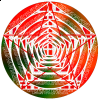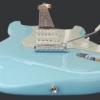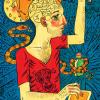Very cool. Looking forward to your write up and analysis.Did the laser at 20.00 (8 PM) and tests abot 18.00 (6 PM) the day after, did lasering EOD. So never tests after laser the same day, only before and 22 h after.

Lostfalco's Extensive Nootropic Experiments [Curated]
#1591
Posted 19 December 2013 - 07:13 PM
#1592
Posted 19 December 2013 - 07:38 PM
Thanks Papa! Very interesting study. I have never tried bemitil but I have tried bromantan http://awakebrain.co...s/ladasten.html a time or two. Will have to look back into the research.Instantly, I was intrigued. I looked it up and found this: http://www.ncbi.nlm....les/PMC3762282/ The Pharmacology of Actoprotectors: Practical Application for Improvement of Mental and Physical Performance Sergiy Oliynyk and Seikwan Oh
Thanks man. Just checked out the first episode...cool show. I may have to take up juggling now. =)Hey guys check these vids out. Really interesting stuff
#1593
Posted 20 December 2013 - 12:48 AM
The tests were a battery on Quantified-Mind consisting of Choice Reaction Time (testing reaction time), visual matching (testing visual perception), sorting (testing executive function) and finger tapping (testing motor skills). Something obviusly dumb from my part was not to check what areas of the brain that are related to those parts. If I have used LLLT on the front of my head and the function is related to an area at the back of the brain it's obviously useless. I mainly did at the forehead and 2 spots back on the head.
https://www.mediafir...j1xwki33mw9h036 - To download the data in CSV form.
Anything more you want to know? When the data is analysed a bit more I'll post a write-up on it.
I forget, how was the randomization being done here? The CSV is presented as a single big ABA trio of blocks (LLLT scores, then non-LLLT scores, then LLLT again). This makes me worry in part because the effects are so clear... I wish you had registered at the time your best guesses at what condition you were in so I had a better idea how well your blinding actually worked, but oh well.
Anyway, the analysis (Longecity's codeblocks are completely broken, see my pastebin at http://pastebin.com/raw.php?i=j73fQ7jX ):
R> lllt <- read.csv("http://dl.dropboxusercontent.com/u/243666993/2013-12-18-enlilasko-lllt.csv")
R> lllt$LLLT <- as.logical(lllt$LLLT)
R> summary(lllt)
LLLT Choice.Reaction.Time Visual.Matching Sorting Finger.Tapping
Mode :logical Min. :506 Min. :554 Min. :592 Min. :504
FALSE:20 1st Qu.:543 1st Qu.:581 1st Qu.:606 1st Qu.:542
TRUE :20 Median :566 Median :584 Median :614 Median :560
NA's :0 Mean :564 Mean :586 Mean :616 Mean :560
3rd Qu.:583 3rd Qu.:593 3rd Qu.:622 3rd Qu.:583
Max. :609 Max. :612 Max. :645 Max. :610
# _r_
R> cor(lllt[-1])
Choice.Reaction.Time Visual.Matching Sorting Finger.Tapping
Choice.Reaction.Time
Visual.Matching 0.4266
Sorting 0.6576 0.7173
Finger.Tapping 0.7982 0.5185 0.7070
So you can see that the test-scores are all highly intercorrelated, as one might expect, indicating good and bad days. This is as one would expect. This also means it may be dangerous to use your normal independent t-test/linear-model since the p-values and standard errors and stuff could be all wrong, so one should use multivariate linear model + MANOVA.
R> summary(lm(cbind(Choice.Reaction.Time, Visual.Matching, Sorting, Finger.Tapping) ~ LLLT, data=lllt)) ... Response Choice.Reaction.Time : Coefficients: Estimate Std. Error t value Pr(>|t|) (Intercept) 544.45 4.03 135.15 < 2e-16 LLLT 39.20 5.70 6.88 3.6e-08 Response Visual.Matching : Coefficients: Estimate Std. Error t value Pr(>|t|) (Intercept) 580.75 2.69 216.22 <2e-16 LLLT 9.65 3.80 2.54 0.015 Response Sorting : Coefficients: Estimate Std. Error t value Pr(>|t|) (Intercept) 606.65 2.50 242.2 < 2e-16 LLLT 18.05 3.54 5.1 9.9e-06 Response Finger.Tapping : Coefficients: Estimate Std. Error t value Pr(>|t|) (Intercept) 537.40 3.67 146.29 < 2e-16 LLLT 46.10 5.20 8.87 8.5e-11 R> lllt$All <- with(lllt, scale(Choice.Reaction.Time) + scale(Visual.Matching) + scale(Sorting) + scale(Finger.Tapping)) R> summary(lm(All ~ LLLT, data=lllt)) Call: lm(formula = All ~ LLLT, data = lllt) Residuals: Min 1Q Median 3Q Max -6.509 -1.339 -0.081 1.078 4.693 Coefficients: Estimate Std. Error t value Pr(>|t|) (Intercept) -2.552 0.505 -5.05 1.1e-05 LLLTTRUE 5.103 0.714 7.14 1.6e-08 ... Coefficients: Estimate Std. Error t value Pr(>|t|) (Intercept) -2.552 0.505 -5.05 1.1e-05 LLLTTRUE 5.103 0.714 7.14 1.6e-08 R> summary(manova(lm(cbind(Choice.Reaction.Time, Visual.Matching, Sorting, Finger.Tapping) ~ LLLT, data=lllt))) Df Pillai approx F num Df den Df Pr(>F) LLLT 1 0.71 21.4 4 35 5.3e-09 Residuals 38
For all 4 tests, higher=better. (Note that 'Choice.Reaction.Time' is not, as it sounds like, # of milliseconds, but rather some sort of video-game-like score.) Since all the coefficients are positive, this suggests LLLT helped. All the coefficients are also statistically-significant and I figure (though I didn't check) that they'd all pass multiple-correction too. The MANOVA agrees that LLLT made a difference.
Generally, we're not talking huge differences here: like 10% of the overall scores. But the scores don't vary vmuch over time, so the LLLT influence sticks out.
I'm not good at visualizing data in R, but I tried to show the graphed data:
R> lllt$time <- 1:40
R> library(reshape2)
R> df.melt <- melt(lllt, id.vars=c('time', 'LLLT'))
R> ggplot(df.melt, aes(x=time, y=value, colour=variable)) + geom_point()
R> ggplot(df.melt, aes(x=time, y=value, colour=LLLT)) + geom_point()
All data, colored by test type:

http://i.imgur.com/3ExgmkX.png
All data, colored by LLLT-affected:

http://i.imgur.com/dUEEPKI.png
So you can see part of why I'm worried here: the third group of data looks very different from the other two groups, as not just are the scores all high, but they're also very narrowly bunched in an ascending line compared to the really spread out second group or even the first group. What's going on there? Pretty anomalous.
Edited by gwern, 20 December 2013 - 12:50 AM.
#1594
Posted 20 December 2013 - 02:14 AM
Thanks for the analysis gwern!So you can see part of why I'm worried here: the third group of data looks very different from the other two groups, as not just are the scores all high, but they're also very narrowly bunched in an ascending line compared to the really spread out second group or even the first group. What's going on there? Pretty anomalous.
Initial quick summary of gwern's analysis for those following at home. =)
For all 4 tests, higher=better.
Since all the coefficients are positive, this suggests LLLT helped.
Generally, we're not talking huge differences here: like 10% of the overall scores. But the scores don't vary much over time, so the LLLT influence sticks out.
Open Question: why does the second LLLT data set look so different from the others?
Edited by lostfalco, 20 December 2013 - 03:00 AM.
#1595
Posted 20 December 2013 - 01:15 PM
I forget, how was the randomization being done here? The CSV is presented as a single big ABA trio of blocks (LLLT scores, then non-LLLT scores, then LLLT again). This makes me worry in part because the effects are so clear... I wish you had registered at the time your best guesses at what condition you were in so I had a better idea how well your blinding actually worked, but oh well.
The randomization was done as in my father decided what to do. It's actually ABBA (Sweden ftw) rather than ABA. I atleast hope that's randomization, otherwise I have fucked up. Should I have done ABAB but not know which one was LLLT and which one was placebo?
So I told him I was gonna do it in 4 blocks, I wanted 50/50 (50% LLLT, 50% placebo), but he could do it in whatever order).
Some factors that are probably making the results fucked up is that the first two blocks were done with about 3 days rest between. The third phase was done maybe a month (probably more) after that (with double time, still placebo though) and then the fourth phase was done about a month after that, with no school at all (more focused, still double time). So it's either because the long wait or that I respond waaaay better to LLLT with 2 minutes / place rather than 1 minute / place. I think that fucked up things hard, but can't fix that now (if I don't re-do the experiment).
So you can see part of why I'm worried here: the third group of data looks very different from the other two groups, as not just are the scores all high, but they're also very narrowly bunched in an ascending line compared to the really spread out second group or even the first group. What's going on there? Pretty anomalous.
Noticed that too when I plotted the last phase in excel, 3 lines were pretty much identical the last few days, was pretty shocked to see that.
I might do this blinded again if I use a helmet, holding the lamp was very annoying, so will be easier to do with a helmet.
#1596
Posted 20 December 2013 - 11:52 PM
The randomization was done as in my father decided what to do. It's actually ABBA (Sweden ftw) rather than ABA. I atleast hope that's randomization, otherwise I have fucked up. Should I have done ABAB but not know which one was LLLT and which one was placebo?
So I told him I was gonna do it in 4 blocks, I wanted 50/50 (50% LLLT, 50% placebo), but he could do it in whatever order).
Ah, ok. That's better than I thought, then.
Some factors that are probably making the results fucked up is that the first two blocks were done with about 3 days rest between. The third phase was done maybe a month (probably more) after that (with double time, still placebo though) and then the fourth phase was done about a month after that, with no school at all (more focused, still double time). So it's either because the long wait or that I respond waaaay better to LLLT with 2 minutes / place rather than 1 minute / place. I think that fucked up things hard, but can't fix that now (if I don't re-do the experiment).
Ah, I didn't realize you had changed the dose. That means the right analysis is going to be different, since I need to take into account the dose size in case that matters, which it turns out, it does (as one would expect since you say you doubled the time for the *second* group, which was the same group I was wondering why it was so high):
lllt <- read.csv("http://dl.dropboxusercontent.com/u/243666993/2013-12-18-enlilasko-lllt.csv")
lllt$LLLT <- as.logical(lllt$LLLT)
lllt$Dose <- c(rep(12, 10), rep(0, 20), rep(20, 10))
summary(lllt)
LLLT Choice.Reaction.Time Visual.Matching Sorting Finger.Tapping Dose
Mode :logical Min. :506 Min. :554 Min. :592 Min. :504 Min. : 0
FALSE:20 1st Qu.:543 1st Qu.:581 1st Qu.:606 1st Qu.:542 1st Qu.: 0
TRUE :20 Median :566 Median :584 Median :614 Median :560 Median : 6
NA's :0 Mean :564 Mean :586 Mean :616 Mean :560 Mean : 8
3rd Qu.:583 3rd Qu.:593 3rd Qu.:622 3rd Qu.:583 3rd Qu.:14
Max. :609 Max. :612 Max. :645 Max. :610 Max. :20
l1 <- lm(cbind(Choice.Reaction.Time, Visual.Matching, Sorting, Finger.Tapping) ~ LLLT, data=lllt)
l2 <- lm(cbind(Choice.Reaction.Time, Visual.Matching, Sorting, Finger.Tapping) ~ Dose, data=lllt)
anova(l1,l2)
Res.Df Df Gen.var. Pillai approx F num Df den Df Pr(>F)
1 38 151
2 38 0 138 0 0 0
Since the dose model fits so well, all the p-values in `l2` are higher than in my previous analysis.
Noticed that too when I plotted the last phase in excel, 3 lines were pretty much identical the last few days, was pretty shocked to see that.
I might do this blinded again if I use a helmet, holding the lamp was very annoying, so will be easier to do with a helmet.
Yeah. I'm wondering whether it was genuine improvement or what... what another week or two of testing would've shown.
OK, so here's how I would modify your experiment, in roughly descending order of importance:
- switch to much shorter blocks: closer to 3, maybe even just randomize daily
- make some sort of blinding index: for example, each day you could write down after the testing what you think you got, and then when it's done, check to see if you outperformed a coin flip. If you did, then the blinding failed and it's just randomized
- use a wider range of doses: for example, 0.5 minutes, 1 minute, 2 minutes / place, or maybe 1/2/3 to see where the benefits being to break down
- run the measurements on each day, even days without LLLT. I'm interested in the fadeout - in the first experiment's data, it looks like the effects of LLLT are almost instantaneous, which isn't very consistent with a theory of increased repair and neural growth, which should take longer
#1597
Posted 21 December 2013 - 05:37 PM
Mitochondrial respiration as a target for neuroprotection and cognitive enhancement.
http://pdfcast.org/p...llt-and-ketones
Edited by lostfalco, 21 December 2013 - 05:42 PM.
#1598
Posted 22 December 2013 - 09:21 AM
Please pass on your thanks to this moron, and let him know all the work and effort he's probably putting in on some website devoted to maximizing the potential of every second of life (and beyond?) is very much appreciated.The full text of the latest Gonzalez-Lima/Rojas article on MB, LLLT, and Ketones...posted by some moron. Happy Holidays everyone! =)
Mitochondrial respiration as a target for neuroprotection and cognitive enhancement.
http://pdfcast.org/p...llt-and-ketones
Merry Christmas everyone! I'm not a huge contributor to the website but I read from it multiple times every day, and I can't thank all of you enough for sharing your thoughts, experiences, knowledge and wisdom. My life has become better for it, and I love you all.
Here's to a great 2014!
#1599
Posted 22 December 2013 - 08:17 PM
#1600
Posted 23 December 2013 - 12:36 AM
I've used the 850nm 48 LED
http://www.ebay.com/...=item2ebee7ab11
for 3 sessions now EOD @2mins/spot. NAC + vit. C supplemented as well.
So far - nothing, no sides, no benefits. Not tired, sleep as usual.
However, what bothers me is that when I hold the device in my palm in the dark and film it with my camcoder it doesn't shine through. How in the world is it supposed to penetrate my head then?
Best,
Steve
Edited by montana2012, 23 December 2013 - 12:37 AM.
#1601
Posted 23 December 2013 - 01:14 AM
Congrats on the great thread,
I've used the 850nm 48 LED
http://www.ebay.com/...=item2ebee7ab11
for 3 sessions now EOD @2mins/spot. NAC + vit. C supplemented as well.
So far - nothing, no sides, no benefits. Not tired, sleep as usual.
However, what bothers me is that when I hold the device in my palm in the dark and film it with my camcoder it doesn't shine through. How in the world is it supposed to penetrate my head then?
Best,
Steve
Many cam corders have infrared filters on them that will not show infrared light. Perhaps that is why.
#1602
Posted 23 December 2013 - 03:17 AM
Edited by montana2012-, 23 December 2013 - 03:20 AM.
#1603
Posted 23 December 2013 - 04:43 AM
#1604
Posted 23 December 2013 - 05:34 AM
I planned on blogging about this really soon, along with a couple other things, but I'm swarmed with stuff right now, so I could share the data with you. I'll be using 810nm up my nose for these ten days. Any information on how I can make the data more reliable? I also plan on taking some pictures because I'm working on a lot of health related things (thyroid, nutrient repletion, etc.) and there should be changes in my appearance (slightly dark circles and bags under my eyes, blemishes, etc.) - 810nm intranasal light has anecdotally aided in peoples skin health (acne and what not) since it irradiates the blood. I'll then take another break, take more tests, and start up another with 630nm red lasers for targeting acupuncture points.
#1605
Posted 23 December 2013 - 12:43 PM
So, has anyone tried combining LLLT and MB ? Any reasons why this might be a bad idea?
And if you decided to combine the two, what is those of MB to start with?
Thanks
#1606
Posted 23 December 2013 - 01:13 PM
I posted an expanded version of my analysis of Nattzor's data to http://www.gwern.net/LLLT (Hopefully he'll run another experiment with my suggestions and I'll have even more to write up!)
Thanks x1000.
Hey, gwern, if you want I can probably add to the data. I did TULIP and then took roughly a six week break and just started my second round of LED treatments this past week (minus the supplements). Before starting the second round, I took I don't know, six or so tests through cambridge brain sciences. I'll be taking the tests again, in addition to the "IQ test" through the same source, as well as a bunch of duel n-back variations, and then doing a ten day run of intranasal near infrared light (for ten days straight). The only problem with my first test data was that I was having a bad 'flare' of my HPPD symptoms and thus couldn't think straight, but regardless that adds more merit to the lights (if I did poorly on tests due to psych/neurological problems, and did even slightly better due to the uplifting of the symptoms, the simple fact that symptoms were dissipated says something in its own right).
I planned on blogging about this really soon, along with a couple other things, but I'm swarmed with stuff right now, so I could share the data with you. I'll be using 810nm up my nose for these ten days. Any information on how I can make the data more reliable? I also plan on taking some pictures because I'm working on a lot of health related things (thyroid, nutrient repletion, etc.) and there should be changes in my appearance (slightly dark circles and bags under my eyes, blemishes, etc.) - 810nm intranasal light has anecdotally aided in peoples skin health (acne and what not) since it irradiates the blood. I'll then take another break, take more tests, and start up another with 630nm red lasers for targeting acupuncture points.
My guess is that gwern (and I) want you to do it blinded and quantify it as much as possible. Idk how it could be done blinded if you did it intranasally though.
Cool pdf, thank you for sharing that !
So, has anyone tried combining LLLT and MB ? Any reasons why this might be a bad idea?
And if you decided to combine the two, what is those of MB to start with?
Thanks
Are you the reddit guy? If not: http://www.reddit.co...s_a_target_for/
#1607
Posted 23 December 2013 - 09:08 PM
Monday/Tuesday/Thursday/Friday/Sunday
morning:
Coluracetam 40mg
Artichoke extract 1000mg
Forskolin 25mg
Alcar 1000mg
Orange Triad Multivit (three pills)
Omega 3 (EPA 380 and DHA 266)
Centrophenoxine 500mg
Protein whey 40g
Palatinose 30g
MB 60mcg
before sleep:
Whole brain LLLT (not on Wednesday and Saturday)
Creatine
Multivit (three pills)
Omega 3 (EPA 380 and DHA 266)
MB 60mcg (after LLLT)
PQQ 20mg
Shilajit 1000mg
Horney goat weed (500mg 50% icariins, PDE4 and PDE5 inhib)
Coluracetam 40mg
Alpha GPC 500mg
BCI-952
Dual N-back for one hour
I’m using this stack for three weeks now. I can read and study for hours without distraction. I’m almost immediately in the “zone”. Also my memory improved greatly (7 to 14 on the monkey ladder game). Furthermore I’m remembering things from my past with great detail. Until now no side effects occurred.
Edited by Rumpelstiltskin, 23 December 2013 - 09:10 PM.
#1608
Posted 24 December 2013 - 01:46 AM
#1609
Posted 24 December 2013 - 09:41 AM
In this stack:
1. Palatinose (because glucose is a primary source of energy for your brain and palatinose enters the blood at a slow rate)
2. MB (because it's cheap and very effective)
3.TULIP
4. Ciltep (with alcar)
All time:
1. Armodafinil (wakefulness)
2. TDCS (energy and clear thinking)
3. Ice baths and cold showers (wakefulness and clear thinking)
4. PRL-8-53 (It gives me energy and improves memory a little)
Of course is exercise, a healthy diet, 7 hours of sleep and regular brain training (doing new stuff) the most important thing to do.
Cheers!
#1610
Posted 25 December 2013 - 06:12 AM
In regards to the following; would altering the inflammatory pathway involved in response to 'laser stimulation' (the abstract doesn't mention frequency) alter hormesis? (though I suppose many are combining strong antioxidants; NAC, ALA, curcumin, etc. as well as (other) anti-inflammatory drugs with good effect, i'm not sure how this connects)
Come to think of it, my girlfriend is taking all the above but ALA and seems to be responding quite well to lllt.
I'd like to know the mechanism; the erythema-preventative effects of c60 mentioned in the abstract make me wonder if c60 might interfere with pbiostimulation to some extent.
Don't have the fulltext, but:
http://onlinelibrary....22065/abstract
Induction of different reactive oxygen species in the skin during various laser therapies and their inhibition by fullerene.
Fujimoto T, Ito S, Ito M, Kanazawa H, Yamaguchi S.
Author information
Abstract
BACKGROUND AND OBJECTIVES:
The production of reactive oxygen species (ROS) is one of the mechanisms of laser irradiation in the skin, and there are beneficial and detrimental aspects to this reaction. Detrimental side effects after laser treatments, such as redness and pigmentation, can be reduced by using anti-oxidants.
MATERIALS AND METHODS:
Electron spin resonance (ESR) analysis using a free radical trapping agent revealed that different free radicals, including hydroxyl ((·) OH) and superoxide anion (O 2-) radicals, were generated in the skin of hairless mice by irradiation with intense pulsed light (IPL), plasma, and radio frequency lasers.
RESULTS:
Generation of O 2- and (·) OH radicals was significantly inhibited in a dose-dependent fashion by fullerene and fullerene did not have any pro-oxidant effects as no radical adduct signal was detected. Although ROS can increase expression of COX-2 mRNA, an inflammatory marker, laser-induced COX-2 expression was significantly suppressed by the antioxidant activity of fullerene. In addition, imaging analysis of human skin has shown that erythema-associated redness caused by laser-induced inflammation is inhibited by fullerene gel.
CONCLUSION:
These data suggest that laser-induced inflammation is suppressed by the ROS-scavenging activity of fullerene and that application of fullerene is effective against oxidative skin damage caused by laser irradiation. Thus, fullerene has potential as an after-care therapy following laser irradiation of the skin.
I
Edited by macropsia, 25 December 2013 - 06:31 AM.
#1611
Posted 25 December 2013 - 07:11 AM
#1612
Posted 25 December 2013 - 12:04 PM
Edited by Rumpelstiltskin, 25 December 2013 - 12:06 PM.
#1613
Posted 25 December 2013 - 12:20 PM
60mcg MB has a half life of 3-6 hours. If you take it early in the morning and use lllt late in the evening than its unlikely there is a harmful interaction between the two (consedering the low dosage and the time in between). Also mb after lllt is likely not harmfull. But maby too stimulating. For me, I feel great and my memory is better than ever. I will look into c60 after christmas. My girlfriend alrdy thinks Im crazy because Im sitting with electrodes on my head at the dinner table. Nothing more romantic than having dinner with a biohacker.
"The time course of methylene blue in whole blood after i.v. administration showed a multiphasic time course with an estimated terminal half-life of 5.25 h"
- http://www.ncbi.nlm....pubmed/10952480
Doesn't that just mean that half of it is gone in the blood after 5.25 h? That would mean that the rest is either in tissue or pissed out. And if we continue reading we'll see this:
"The urinary excretion of methylene blue and its leucoform was only moderately higher after i.v. administration (18% vs 28% dose)."
I'm guessing it builds up in the body, thus waiting hours between the LLLT session and MB supplementation wont "work".
#1614
Posted 25 December 2013 - 12:38 PM
60mcg MB has a half life of 3-6 hours. If you take it early in the morning and use lllt late in the evening than its unlikely there is a harmful interaction between the two (consedering the low dosage and the time in between). Also mb after lllt is likely not harmfull. But maby too stimulating. For me, I feel great and my memory is better than ever. I will look into c60 after christmas. My girlfriend alrdy thinks Im crazy because Im sitting with electrodes on my head at the dinner table. Nothing more romantic than having dinner with a biohacker.
lol I ask myself "What the hell is happening?" every time I visit this thread. It sounds cool though.
bigsend Rep +1 I'm curious to see what information can be gleamed from NutraHacker.
#1615
Posted 25 December 2013 - 03:36 PM
#1616
Posted 25 December 2013 - 06:42 PM
(light absorption by MB)
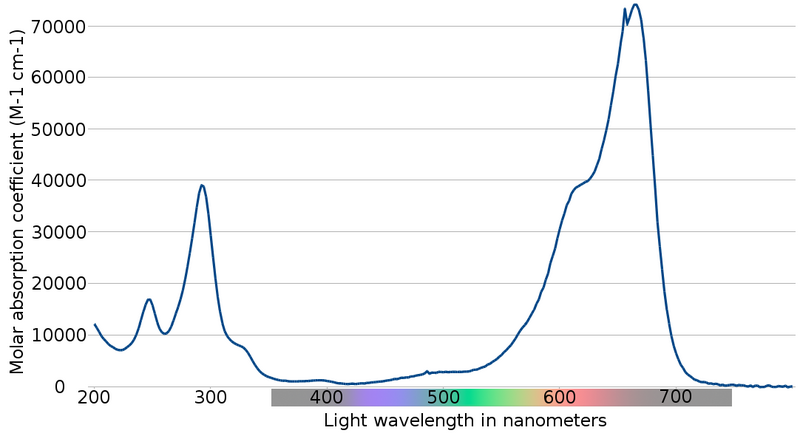
From the Mutagenesis article mentioned earlier in the thread:
The aim of this study was to investigate whether DNA damage, as measured by the comet assay, can be minimized during chromoendoscopy by varying MB concentration and light wavelength using an in vitro model. OE33 cells were treated with MB (0.015–15 mM) and exposed to white light (WL). Cells were also illuminated with WL fractions (580–700, 480–580, 350–480, <575, <610 and <688 nm) in the presence of MB. At clinically relevant concentrations, WL illumination of MB (15 mM) caused significant DNA damage in vitro (P< 0.001). Illumination of MB with red light (580–700 nm) also stimulated high levels of DNA damage in OE33 cells (P < 0.001). This effect was not observed with green or blue light. Filtering WL to remove red light wavelengths (>575 nm) reduced DNA damage and apoptosis to control levels in MB-treated cells. In addition, reducing the concentration of MB 10-fold markedly reduced the DNA-damaging effect of MB in vitro. The results show that photoactivation of MB by red light is responsible for the majority of DNA damage.
http://mutage.oxford...t/24/3/253.long
So I guess the absorption data lines up with the toxicity data, though the infrared range hasn't been explicitly tested (that I've yet found - there's a pretty extensive lit. on MB) . And the wiki mentions variability of light-interaction properties due to MB's state. And the light output from leds, while centered on the target frequency, will have a little bit of a higher and lower frequency tail... hell, you can see a bit of a glow from all the IR lights I've seen. Can't speak much for lasers.
Edited by macropsia, 25 December 2013 - 06:44 PM.
#1617
Posted 26 December 2013 - 08:42 PM
Still looking for help with a helmet though, anyone got any suggestions on how to make one?
#1618
Posted 26 December 2013 - 10:21 PM
Yeah Papa, I think there are some very interesting things going on with sleep here. I don't usually like to talk about things until I've been experimenting or testing them for a while...but what hell. =) Aarfai and I have both been experiencing less and less of a need for sleep. He's down to about 4 hours and I'm down to about 5. I feel amazing when I wake up and my body seems to want to wake me up at 4am. It's been very consistent. I have some theories about this, but I need to research more before I feel good writing about it. I'm also off modafinil right now and currently don't even feel like I need it anymore. I'm very interested to see how long this holds up...I was on it for an entire year straight. I will gladly get rid of it though if I don't need it...it's kind of expensive. haFor what it's worth, I experienced something interesting today. Last night, lateee at night (a little before 3am) I used the LEDs, again at F3/4 (or roughly those regions) for a little over 2 minutes each, maybe 2 minutes and 15 seconds. I went to bed shortly after, only to be awoken by my phone going off from receiving a text - this occurred at about about 7:50am. I fell asleep roughly around 3:30am. I thought it would be wise to just sleep in, but as I tried, it was impossible. I was just wide awake (well not wide awake, but awake enough that it would've taken me two hours just to try and get the extra two hours of sleep I thought I needed, lol). I'm loosely following the LeptinRx, and I decided screw it, time for breakfast. After breakfast I still felt energetic so I went for a nice long barefoot stroll in the sun. Roughly 4 hours asleep and I felt absolutely fine. To put it differently, I felt like how I would normally feel if I had a long day followed by an intense workout and then only got roughly 6 hours of sleep - I'm alert and awake, but if I only had gotten one more hour of sleep I'd be perfect. That's how I feel now, only, I had a long day and got four hours of sleep. I've been trying to avoid coffee at all costs unless I could somehow manage to get the money to get Upgraded Coffee, but I fell for some Starbuck's today, and now I feel like I regained that figurative extra hour that would make me feel even better.
This coincided with what someone posted recently, stating that they woke up alert and focused after about four and a half hours of sleep. This really has me thinking about some things I've been reading. A lot of people that follow Dr. Ray Peat believe that cytochrome oxidase loses its function as darkness is set upon us. I don't know yet if that is or is not true (and how that affects mitochondria while sleeping). So, many of the 'Peaters/Peatarians' use red lights on their feet or over their body while they sleep to still stimulate cytochrome oxidase. I'm wondering if doing LLLT directly before sleep is essentially doing the same thing, and thus what can allow one to wake up alert even though they have slept even less than before. I definitely want to look into this - maybe there are some sleep hacks that can be accomplished with this..?
An experiment I tried during my cross country drive was this...when I got extremely tired (after 10 hours of straight driving), I stopped, ate some food, used the Vetro on my entire brain, napped for 20-30 minutes, woke up, took the TULIP supps, and started driving. After about 10 to 20 minutes I felt as though I had just slept an entire night. In fact, I stayed awake for 12 more hours and it just felt like a normal day. In about 50 hours total, I slept a total of maybe 2 hours and felt great. My body actually got a little tired but my brain felt perfectly fine. Kinda cool.
Now to be fair...once I finally slept it was for 13 hours. It's not like sleep is unnecessary or something. Anyway, just an anecdote. Take it for what it's worth and keep your critical thinking faculties cranked up as always. =)
btw Papa...I'm really glad to hear that your hppd still seems to be under control and that your mood, emotions, and thinking are doing great. That is super exciting news!
Hey guys, I've been doing 808nm LED on my head, on and off since ~2001. Also 645-820nm pulsating laser 5mw, or solid 50mw red or 500mw 808nm, probably more frequently than the LED, since about 2002. I also do a TON of other life extending things, lots of which I write about, some of which I haven't yet due to lack of time. I slept for <5 hrs per night, EVERY night, for 2 years to see what would happen. Often it was 2-3 hours. Nothing bad happened. Cortisol dropped, 24 hour heart rate monitoring said my autonomic nervous system was that of someone younger than me. I'm averaging 6 hours these days (now at 6 hrs 3 mins avg for the last year) because the risk curve of 6 hours is nearly identical to 6.5 hours in the studies I cite on my site showing that people who sleep 6.5 live longer than those who sleep 8.
I know that FIR LEDs on the head can reset circadian rhythm, but have not thought that it had much of an impact on my low sleep requirements. The biggest difference for me is making sure I have BHB in my system to make ATP (I use Brain Octane oil for that) and scrupulous avoidance of natural and manmade toxins that cause brain fade. But this thread has me wondering if my "upgrade my mitochondria at any cost" strategy helped. I also used methylene blue for a while in 2008. Rectal ozone too played a huge role in making my mitochondria rock.
Hope this info is helpful. Lostfalco's work has inspired me to upgrade my LED setup; I was thinking of soldering together some new emitters but these days I have far too little time to play that way very often. It was easier to be a biohacker before I had kids and started writing.
#1619
Posted 26 December 2013 - 10:43 PM
I'd have to say, I wholeheartedly recommend LostFalco to be on your podcast. He is the primary reason that I have made any dent in my HPPD symptoms, and a lot of the awesome work contained within this thread is based off the foundation he built in his original post.
If you don't mind, what was your experience with Methylene Blue? I'm highly intrigued because it has been shown to ward of the cognitive problems associated with anticholinergics and I believe that Acute Anticholinergic Syndrome is what caused my HPPD; it's also dirt cheap. Any information on what you experienced, doses, time frame, etc? Also, one of the recent posters here shared a link for 630nm red laser pens that are about $4. I purchased one and will experiment with it on acupuncture points, but I'm also thinking about using it simultaneously with 10hz pulsed 810nm NIR light up the nostril. So 630nm up one and 810nm up another.
Awesome that you posted here, though. Do you have any experience with nebulized subtances? I'm thinking about nebulizing Sodium Bicarbonate, Hydrogen Peroxide, and perhaps Mag.Sulphate.
#1620
Posted 27 December 2013 - 03:36 PM
I am thinking of buying 3 of those with 100mW output per piece.
Also tagged with one or more of these keywords: nootropic
Science & Health →
Brain Health →
Nootropic Stacks →
how would you describe Cerebrolysin to a person unfamiliar to nootropics?Started by davidwood557 , 01 Oct 2024 |
|

|
||
Round Table Discussion →
Business →
Retailer/Product Discussion →
J 147 Powder to Treat Alzheimer’s DiseaseStarted by Peptide.ltd , 18 Apr 2024 |
|
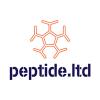
|
||
Science & Health →
Brain Health →
Montelukast?Started by mp_double , 25 Jan 2024 |
|

|
||
Science & Health →
Brain Health →
Nootropic Stacks →
What are the most effective NOOTROPICS based on science?Started by Forever21 , 30 Oct 2021 |
|

|
||
Science & Health →
Brain Health →
Dihexa?Started by brendan1 , 05 Sep 2021 |
|

|
2 user(s) are reading this topic
0 members, 2 guests, 0 anonymous users






































